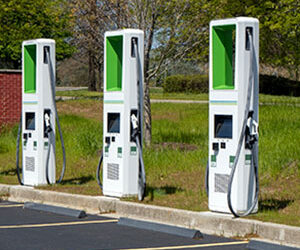Energy companies are implementing vital policies and practices to recruit, retain, and fully include lesbian, gay, bisexual, transgender, and queer (LGBTQ+) employees in their businesses.
In fact, many of them are participating annually in the Human Rights Campaign’s annual Corporate Equality Index, the national benchmarking tool on LGBTQ+ workplace equality, and are showing top scores.
According to the 2021 edition, 67% of all companies evaluated had a perfect score of 100 – up 2% from 2020, and this includes energy businesses. Also, 91% of all CEI-rated businesses offer transgender-inclusive health insurance coverage – 22 times as many businesses as 12 years ago, and 99% of all CEI-rated companies offer explicit gender identity nondiscrimination protections – up from 5% in 2002.
Several energy companies, including Alliant Energy Corp., National Grid, and American Electric Power Co., were even each named a “Best Place to Work for LGBTQ+ Equality.” The full list of companies, including others in the energy sector, can be found here.
By creating a culture of inclusivity that makes LGBTQ+ employees feel comfortable in sharing their identities at work, energy companies are reaping significant benefits, including stronger innovation, less attrition, a more engaged workforce, and improved financial performance.
Here is what those three top performing energy businesses are doing to amplify their activities, policies, and priorities related to LGBTQ+ rights and inclusion.
Topping the Corporate Equality Index
To earn top ratings in the Human Rights Campaign’s Corporate Equality Index, energy businesses take concrete steps to establish and implement comprehensive policies, benefits, and practices that ensure greater equity for LGBTQ+ workers and their families.
The CEI rating criteria includes four key pillars:
- Nondiscrimination policies across business entities
- Equitable benefits for LGBTQ+ workers and their families
- Supporting an inclusive culture
- Corporate social responsibility
The CEI also serves as a roadmap for companies to follow to ensure they implement LGBTQ+ inclusive policies and practices. By using CEI criteria as a guide, energy businesses are helping ensure their existing policies and benefits are inclusive of LGBTQ+ workers and their families, resulting in greater recruitment and retention of a talented, diverse workforce.
“Every year, the Human Rights Campaign updates the CEI, and it provides companies with a standard of what other companies are doing and what equity and equality standards we should be striving for,” explains Antonio XuLiu, global programs manager, special projects, Diversity, Equity & Inclusion, National Grid. “The CEI gives companies insight into what may be coming down the pipeline next that can help lead conversations and planning from an LGBTQ+ inclusion perspective.”

Nicholas Horn
Nicholas Horn, senior contract analyst for American Electric Power, based in New Albany, Ohio, and co-chair of the company’s Pride employee resource group, agrees. “A few years ago, having full transgender benefits was a big item on the criteria,” he explains. “We didn’t have those at the time, but it became something that we focused on including so we could continue improving our LGBTQ+ benefits packages.”
Because LGBTQ+ community members are not required to identify themselves as part of employment, tracking improvement in a company’s diversity, equity, and inclusion initiatives can be challenging. The CEI is one way, as well as growth in employee resource groups (ERGs), which are groups for employees focused on DE&I areas of interest.
National Grid has two Pride ERGs – one for its U.S. business and one for its U.K. business. ERG groups at National Grid started as early as 10 years ago, and this year directly report to the Diversity, Equity & Inclusion organization and to the Chief Diversity Officer. When XuLiu joined the group four years ago, they had roughly 100 to 150 members in their U.S. group, and today they have over 300.
“We want all of our colleagues to be able to bring their full and authentic selves to work,” XuLiu explains. “As a result of the work that the Pride ERG does, we notice that our colleagues are more comfortable coming out at work and identifying as part of the community. It creates an environment where all parts of their identity are embraced and creates a sense of belonging at work.”
Approximately 10 to 12 years ago, American Electric Power also started its Pride ERG. “My husband and I didn’t know about it and saw an article on the company’s intranet on the group they had in the company’s Ohio location,” says Curtis Austin, joint use representative, American Electric Power, based in Tulsa, Oklahoma, co-chair of the company’s Pride employee resource group. “I contacted them and figured out how to get involved. We had 100 people when I first joined, and today we have over 500 members and allies. “It’s a great place to work; I feel safe being me and who I am,” Austin adds. “I don’t have to hide.”
All of the companies have also learned that employee resource groups don’t just have to be focused solely on LGBTQ+ employees. Including allies is an important step because they want to learn and educate themselves as well. They also help LGBTQ+ employees feel more connected, Austin explains.
Alliant Energy started the Equality Alliance more than 10 years ago, and over the years the company re-envisioned the group, opening it up to allies. “We realized more people wanted to learn about gender identity, pronouns, and understanding the community,” says Adam Erdmann, senior community affairs program manager, Alliant Energy Foundation at Alliant Energy, based in Madison, Wisconsin. Erdmann is also co-chair of the Equality Alliance and a member of the company’s Diversity, Equity & Inclusion Leadership Team.
“The events we have that focus on education are the ones that get the best turnout,” Erdmann says. “It’s an opportunity for people to connect and support each other.”
Including pronouns in email signatures is another step the companies all took to help LGBTQ+ employees feel like they can be themselves at work. Also, giving employees the option to choose a gender beyond the standard choices can help make LGBTQ+ employees feel seen at work.
In May, Alliant Energy’s Equality Alliance rolled out the True Colors Initiative, updating its gender option choices in its employee records to allow a nonbinary option. Job applicants can select this option as well when applying for work. They also added a question asking, “Do you identify as a member of the LGBTQ+ community?” on their job applications and employee records.
“This was a big step for us that took about one year to implement because it took a lot of work to understand how deep the gender field is entwined in our IT systems,” Erdmann explains, adding that having top management help continue to support these changes makes a big difference in the success of the initiatives as a whole.
Community Involvement
Another key piece to the LGBTQ+ inclusion practices at energy companies is their external support and participation in pride events and of pride groups. Externally, all three energy companies support local pride events in their communities through sponsorships or participation and volunteer efforts, including developing pride campaigns during Pride month and throughout the year.
Alliant Energy flies the Pride flag at all of its facilities during the month of June and lights up its Cedar Rapids tower in rainbow colors.
American Electric Power employees regularly take place in pride parades and events in its service territories. The company also supports organizations that help provide food, furniture, or clothing to LGBTQ+ youth who are homeless as a result of coming out. The company realizes it will have bigger events and participation in its larger cities like Columbus, Ohio, and Tulsa, Oklahoma, but they try and support other smaller branch offices as well, like those in Roanoke, Virginia, and Shreveport, Louisiana, to ensure employees there also feel like they have a platform, Horn explains.
National Grid also volunteers and donates time and dollars to the local LGBTQ+ communities, as well as develops pride campaigns throughout the year and during Pride month. “Making the transition to clean energy requires educating customers, and that includes the LGBTQ+ community,” XuLiu says. “No one should have to hesitate about bringing different parts of themselves to work. Once you have colleagues who no longer have to spend their energy guarding what they choose to disclose at work, you’ll create an environment where every person comes to work feeling comfortable and feeling like they belong. As a result, they can be more efficient, innovative, creative, and fully focused on the work they were hired to do.”
Educating Everyone to Ensure 100% Inclusion

Adam Erdmann
While inclusive health benefits, relevant ERGs, and supporting community events are greatly beneficial in helping LGBTQ+ employees and allies feel like they have a place, an employee’s everyday touch points are still the main drivers in whether they truly feel included at work.
In the LGBTQ+ community, language, including pronouns and gender identification, is a big part of recognizing, understanding, and including those employees. In fact, according to research from the Boston Consulting Group and New York City’s Lesbian, Gay, Bisexual & Transgender Community Center, a nonprofit service and advocacy organization, 40% of LGBTQ+ employees report they are “closeted” at work, and 75% say they are experiencing negative day-to-day workplace interactions related to their LGBTQ identity in the past year. Furthermore, employees who experience more negative touch points like this are 40% less productive and 13 times more likely to quit a job.
To tackle this area, Alliant Energy realized that while they can recruit LGBTQ+ employees and be confident in explaining company DE&I programs and benefits, not all employees are comfortable having those conversations. Through Alliant Energy’s Diversity, Equity & Inclusion Leadership Team, they are providing training to all directors and managers. The Empowering Inclusive Leaders training course is designed to give leaders skills to make change in their offices and prevent language breakdowns.
“Some of our leaders just didn’t feel equipped to have diversity, equity, and inclusion conversations,” Erdmann says. “We’ve been talking to our employees to help them understand that when someone feels comfortable in the workplace and can share their full selves with you, that allows them to bring their full creativity and abilities to work,” Erdmann explains, adding that the Empowering Inclusive Leaders program is made up of five 75-minute sessions that employees take over the course of six to eight weeks. “We focus on training them on the proper language to use and how they can best recover when they make mistakes. We enable them with talking points and encourage them to ask questions.
“We think it’s important to focus on these internal education efforts because when we are promoting jobs to the community and recruiting LGBTQ+ employees, we want them to join a comfortable workplace and feel comfortable past their first day.”

Antonio Xiliu
All three companies are continuing to see positive change from their efforts. While not every initiative is trackable by metrics, the growing participation and increase in job applications by all types of people provide them with continued positive momentum.
For LGBTQ+ employees seeking safe and inclusive places to work, energy provides great opportunities, Erdmann says. “Changes are happening in the energy industry; it’s moving toward renewables and electrification,” he says. “There are lots of opportunities for the LGBTQ+ community to be engaged and part of the innovative next steps of what the energy grid will look like.”
Normalizing conversations about DE&I will continue to take place in energy to ensure LGBTQ+ community members can find a welcoming place of employment.
“Diversity, Equity & Inclusion divisions are no longer just nice to have – they are imperative; a must have,” XuLiu says. “When every colleague can be their full selves at work, they can reach their full potential.”




